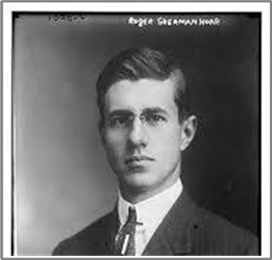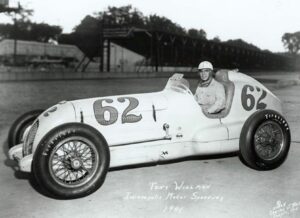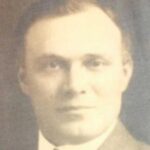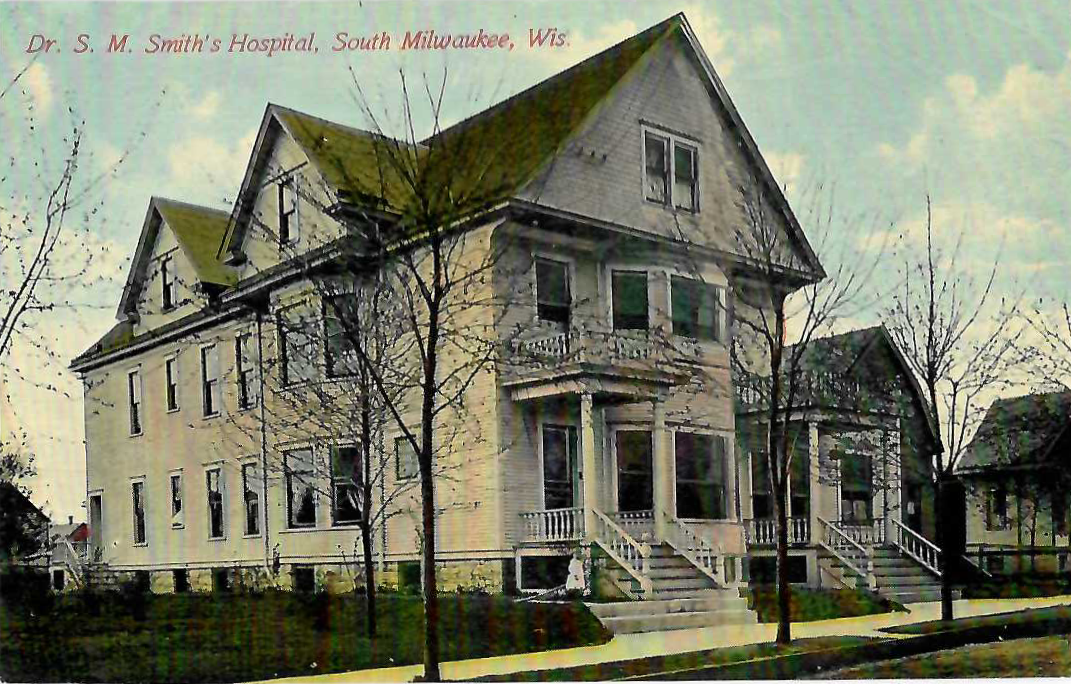– Nels J Monson

Roger Sherman Hoar is perhaps the most notable South Milwaukeean that you have never heard of. Descended from one of America’s most distinguished families, he was born in 1887 in Waltham, Massachusetts—in fact, his great-great-grandfather was one of the signers of the Declaration of Independence. A 1909 graduate of Harvard, he would become a lawyer, politician, college instructor, patented inventor, Army officer, and prolific Science-Fiction author. He also dated Miss Rose Fitzgerald before she became Mrs. Rose Kennedy. After serving as an artillery officer during WW1, Roger Sherman Hoar moved to South Milwaukee in 1921 and was hired as a corporate attorney for the Bucyrus Company. Shortly afterwards he built the beautiful Georgian Colonial that still stands at 1503 Fairview Avenue. He named this house “The Milestone.” Hoar was very active in local affairs and was chairman of the citizen’s committee that successfully called for the creation of the Oak Creek Parkway. In 1934, Hoar was called to Washington by President FDR where he was instrumental in the creation of the Employee Unemployment Benefits Act. Under the name “Ralph Milne Farley,” Hoar immersed himself in the writing of pulp-magazine science fiction. He would pen over a dozen novels as well as numerous stories published in Weird Tales, Argosy, and Amazing Stories magazines. His most notable work was the Radio Man series. In 1931 he joined a group of writers known as the “Milwaukee Fictioneers.” Another member of the Fictioneers was Robert Bloch, who in 1959 wrote the book Psycho— which was turned into a famous Alfred Hitchcock movie. Roger Sherman Hoar died in his home of a heart attack on October 10, 1963, aged 76 and is buried in his family’s plot in Massachusetts.
– Nels J Monson
Click below to view some of the books by Ralph Milne Farley aka Roger Sherman Hoar
– Nels J Monson
– Nels J Monson
Tony Willman

In the world of motorsport racing, South Milwaukee can claim one national champion. With a career that spanned three decades, “Tony” Willman is considered one of the best ever Midget and Sprint car racers from the state of Wisconsin.
A quiet, soft-spoken man—with a contrasting aggressive and hard-charging driving style, Anthony Peter Willman was born at the South Milwaukee Hospital on April 24, 1905. He began his racing career in 1926 and when the South Milwaukee Speedway—located on the east side of 5th Avenue at Puetz Road—first opened in September 1928, Tony was in the field, winning the five-lap feature. Overall, his racing career could boast of winning 44 sprint car main events and at least 85 midget features. In 1941 he won the AAA National Short Track Championship at Williams Grove, Pennsylvania. He is also a member of both the National Sprint Car and National Midget Car Halls of Fame.
Besides Midgets and Sprints, Tony also raced the “big cars.” He participated in the famous Indianapolis 500 four times between 1937-1941. Unfortunately, in all four events Tony’s car suffered a breakdown. His best finish came in 1941, when he was in 4th place before his aggressive style blew out a connecting rod at mile 285.
A major highlight in Tony’s career came on August 4, 1939, when it was decreed “Tony Willman Night” at the Wisconsin State Fair Park racetrack. In celebration of the occasion, Tony was named honorary mayor of South Milwaukee and led an escort of 200 hundred cars to State Fair Park. On October 12, 1941, at a race near Thompson, Connecticut Tony Willman was killed in a tragic accident before a horrified crowd of 12,000—including his wife, Lorraine.
Popular with the fans and highly respected by his peers, Tony was proud of his hometown. Ironically, shortly before his death Tony had confided in friends that he was thinking of retiring so he could manage a service station in South Milwaukee and indulge in a little pheasant hunting. Sadly, this would not be his fate—yet perhaps Tony Willman would be pleased to know that he will always be remembered here for his contributions to a sport—and to a city—he loved so dearly.
– Nels J Monson

Dr. Sidney M. Smith
In many ways, a Canadian man helped transform South Milwaukee into a modern city. Sidney Montreville Smith was born in 1873, in Morton, Ontario. Orphaned by age nineteen, he was working as a mechanic when he enrolled at Queen’s University Medical College in 1896. One year later he married Miss Elizabeth Taylor.
A few weeks after graduating from Queen’s in April 1900, Dr. Smith had moved his family to South Milwaukee and was already practicing medicine. The Smiths soon became popular in South Milwaukee’s business and social scenes. In 1900 he was elected City Physician—a position he would hold for six years. He was also a long-time officer on both the Board of Education and Board of Directors of the South Milwaukee Bank. In February 1906, S. M. Smith became a naturalized US citizen.
In December 1904, Dr. Smith opened the eight-bed Smith Hospital. Soon afterwards he instituted a training school for nurses. The hospital was expanded to twenty beds and served the community until 1958, when Trinity Memorial Hospital opened in Cudahy. The old Smith Hospital still stands at 1217 Milwaukee Avenue.
Though not interested in politics, Smith agreed to run for Mayor after being petitioned heavily by the SM business community— and in 1908 he defeated the incumbent Charles Franke. As mayor, Smith set to work revamping the city as he had pledged to do. He reorganized the Police Department and established a city speed limit. He called for the creation of a Tavern Owners Association, to help clean up the seedier saloons. He also improved the roads, street lighting, and installed concrete sidewalks—replacing the old-fashioned wooden ones along Milwaukee Avenue.
Naturally, Dr. Smith focused on the health of the city’s residents and, as such, expanded and improved the city’s sewage system. By 1910 he was instrumental in building a municipal water filter process plant, believed to be the first on the Great Lakes.
Reluctant to seek second term as mayor, Dr. Smith didn’t declare his candidacy until he was pressured by friends to do so, finally throwing his hat in the ring at the last minute. It seems that it was too little, too late as he lost his rematch with Franke in 1910.
Dr. Smith lived in South Milwaukee until 1912, when he sold his hospital to Dr. C. A. Rumph and moved to Bay View. He set up a practice and residence at 1304-06 Kinnickinnic Avenue, which he ran for many years. On May 10, 1950, Dr. S. M. Smith died at the age of 76. Throughout his life, Dr. Smith remembered his days in South Milwaukee fondly and was justifiably proud of his accomplishments there.




